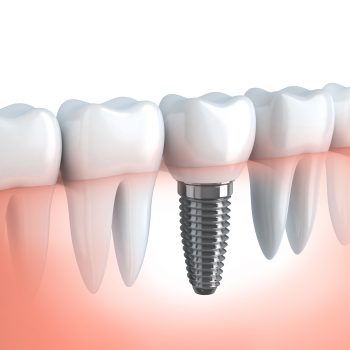
FAQs RELATED TO DENTAL IMPLANT TREATMENT
- On April 17, 2017
The European Association for Osseointegration (EAO) is a body that brings together those professionals whose work relates to osseointegration and dental implants, both in clinics and in research. For a few years, I have been collaborating with a voluntary group of distinguished dentists from Spain, whose function is summarizing the main points treated during EAO’s annual conference. At this conference, the leading exponents of implant dentistry, at the European as well as at world level, shared their knowledge and discussed their findings.
 This is why, when I have a patient who requires an implant treatment, I recommend checking EAO’s information. The association has published a booklet aimed at those patients who are facing this type of treatment, which is a collection of the 56 most frequently asked questions and its answers.
This is why, when I have a patient who requires an implant treatment, I recommend checking EAO’s information. The association has published a booklet aimed at those patients who are facing this type of treatment, which is a collection of the 56 most frequently asked questions and its answers.
The purpose of the booklet is to provide general information about dental implants, rather than to act as a definitive guide for specific situations. If you want detailed information about your case before making a final decision, it is always best to consult a dental professional.
Given the extent of the information, I have taken the liberty of dividing the Q&A into 8 sections, which I will be delivering to you over the following months.
Here are the first 7 questions:
- What is a dental implant?
A dental implant is a screw, usually made of titanium, which is used to replace the root of a missing tooth. The implant is screwed into the jaw, providing a solid base for a crown, a bridge or another dental prosthesis to replace one or more missing teeth.
- What is osseointegration?
After an implant is placed, the surrounding bone will grow in contact with the implant surface, attaching to it. This process is called “osseointegration”. If osseointegration is not established or is lost, the implant will become loose and fail.
- What are dental implants for?
Implants are used to fix a crown, a bridge or a prosthesis that replaces one or more missing teeth. Its aim is to improve your health, chewing function and/or appearance.
- What are the treatment options for replacing a single tooth?
There are several options for replacing a single tooth. Not all of them involve implants.
- An implant can be placed into the gap left by a single missing tooth, and a crown can be fixed on to the implants
- Depending on the condition of the two adjacent teeth, they can be prepared to carry a bridge. The bridge is cemented on to the adjacent teeth and replaces the lost tooth
- A single tooth can also be replaced with a removable prosthesis. This is only done when there are other teeth to be replaced using the same removable prosthesis.
- What are the treatment options for replacing two or more adjacent teeth?
There are several options for replacing two or more adjacent teeth. Not all of them involve implants.
- Implants can be placed in the area where the teeth are missing. Then single crowns or a bridge can be fixed on to the implants
- Depending on the condition of the remaining teeth and their distribution, these can be prepared to carry a bridge. The bridge is cemented on to the teeth and replaces the lost teeth.
- A removable denture supported by a single tooth may also be an option for replacing adjacent missing teeth. However, these are often uncomfortable to wear and are not fixed in the mouth. If the person has too many missing teeth, a tooth-supported bridge is not suitable. Instead, implants can be placed and used to support either a fixed bridge or a removable prosthesis.
- What are the treatment options for the replacement of all teeth?
1 . A removable prosthesis supported by two or more implants can replace the missing teeth in the edentulous mandible.
2 . A fixed bridge supported by four or more implants can replace the missing teeth.
3 . A removable prosthesis that fits on to the alveolar ridge without being anchored by implants is also an option. In the maxilla, depending on the quality of the bone, 6 or 8 implants might be needed.
- What are the advantages of replacing lost teeth with implants?
1 . Fixed bridges supported on implants normally give the comfort and sensation of natural teeth.
2 . A removable prosthesis that replaces some or all of the teeth can also provide a high level of comfort – in case it is well anchored on implants.
3 . Neighbouring healthy teeth do not have to be prepared to serve as anchors for the bridge.
For more information, visit EAO’s website https://www.eao.org/history-of-eao, and to consult the original document on the 56 questions, you can visit https: //www.eao.org/en


